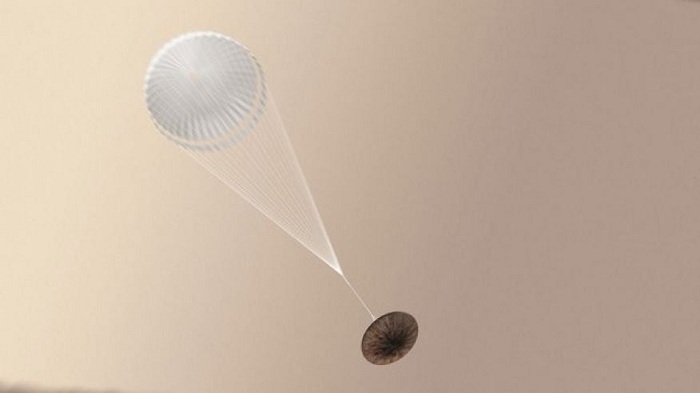"The test has yielded a huge amount of data," David Parker, ESA`s director of human spaceflight and robotic exploration, said at a news conference early this morning. "It gives us a lot of confidence for the future. We need to understand what happened in the last few seconds before the planned landing, and that is likely to take some time."
Schiaparelli was scheduled to touch down on the Red Planet Wednesday at 10:48 a.m. EDT (1448 GMT). But the spacecraft`s handlers could not confirm a successful landing, and were left waiting on a signal. Meanwhile, Schiaparelli`s mother ship, the Trace Gas Orbiter (TGO), successfully entered orbit around Mars.
Schiaparelli had been programmed to follow a demanding 6-minute landing sequence that would see the capsule come to a halt from about 13,000 mph.
The first phases of this sequence went according to plan, Andrea Accomazzo, head of ESA`s solar and planetary missions, said at the news conference from ESA`s operations center in Darmstadt, Germany.
The lander sailed through the upper layers of the Martian atmosphere as expected, and its supersonic parachute deployed on time — important indications that "the heat shield has worked flawlessly," Accomazzo said. But the ejection of the back heat shield and parachute occurred earlier than planned, he added.
"Following this phase, the lander has definitely not behaved exactly as we expected," Accomazzo said.
Schiaparelli was equipped with nine thrusters that were meant to bring the lander to a hover above the Martian surface so that the capsule could plop down from a height of about 6.5 feet. These thrusters, however, fired for only about 3 or 4 seconds — much shorter than mission managers had expected — and the spacecraft lost contact about 50 seconds before its planned landing, Accomazzo said.
As to whether Schiaparelli is still in one piece, "It`s very difficult to say a likelihood now," Accomazzo said.
"We are not in a position yet — but we will be — to determine the dynamic conditions with which the lander has touched the ground, and then we will know whether it could have survived structurally or not," Accomazzo said. "We are still processing the data from the descent. From the surface, we have no data at all."
He added that it might take some time for the team to locate the lander physically on the ground using imagery from an orbiter such as NASA`s Mars Reconnaissance Orbiter.
To date, NASA is the only space program to have completed fully successful missions to Mars` surface. The ExoMars team had hopes that their mission would be the first to pull off such a feat for Europe and Russia. (ExoMars is a joint mission by ESA and the Russian space agency, Roscosmos.)
Though it had some science experiments on board, Schiaparelli was meant to survive for only a few days on Mars, and its main purpose was to test the landing system that`s intended to place a rover on the Red Planet as part of the second phase of the mission, ExoMars 2020. TGO, meanwhile, was designed to analyze the Martian atmosphere for gases such as methane, which could be evidence of life; the orbiter is also meant to serve as a communication link between the 2020 rover and Earth.
"The very good news is that TGO is very successfully inserted into the orbit," said Jan Wörner, director general of ESA. "That means that TGO is now ready for science and, at the same time, ready for data relay, which we need for the 2020 mission."
Wörner said that after another review of the 2020 mission next week, ESA officials will know exactly how much they will have to ask each of the agency`s member states to contribute to complete the funding for ExoMars. (The total amount of extra funding needed is on the order of 300 million euros, or about $329 million.) He and other ESA officials expressed confidence that Schiaparelli`s bumpy finish wouldn`t derail the next phase of the mission.
"All the key pieces of hardware were activated and provided data," Parker said. "The experience feeds into the next mission exactly as planned."
More about:
















































